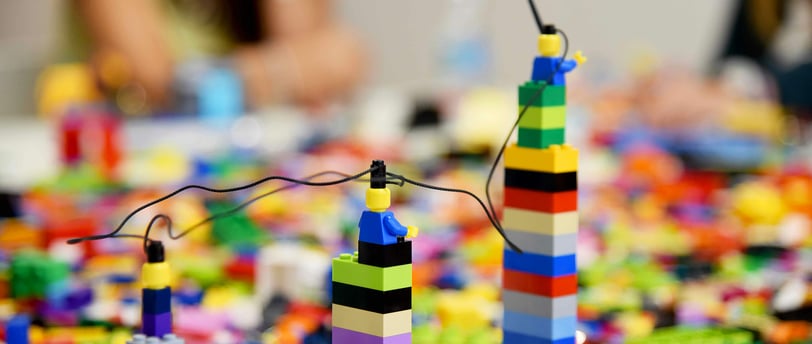Learn about the design Process: How it Influences Your Business
Discover the importance of the design process and how it can positively impact your business. Explore real-life examples of companies that have benefited from implementing a solid design process.
DESIGNBUSINESSDESIGN MANAGEMENTMANAGEMENTDESIGN PROCESS


How to use design to help your business
Each business has something of value to its customers. If they don't they fail soon. Now some businesses start with a rough idea and then slowly drift apart from the initial idea. They start losing customers, or cannot get new ones. Some businesses start with an idea that they haven't fully tested but see a gap in the market. Big businesses have complex workflows that leak money over time or cause huge money losses due to oversight.
There are many business gurus that will have an instant solution for your issues. The design will not magically fix product flaws, or make customers love what you are offering.
Design is a process. It's an ever-evolving process that does not stop when you launch. The design process is never done. There is always something you can change, test, improve, optimize. People who are rigid and think that the design process has a linear flow are living in a fantasy world.
If you google a design process you will get something like this: Empathize, Define, Ideate, Test, and Launch.
Some will say there are more steps, others will say less. All in all, it does not make a difference. In most companies when they do restructuring rebranding revamping, reinventing, or some other BS. It's going to be a take on the design process. How that design process needs to improve. The managers have this pink eyeglasses view of design. They think if you just implement the correct template it's all going to fall in line.
Design Process
Each company has similarities and approaches should be crafted for their needs. You should look at the design process as a skeleton to build upon. Each step has its own definition and how you approach that is your choice.
Empathize
TLDR: Get to know your users/customers, and learn about their motivations, needs, and wants.
How you go about this is not set in stone, there is market research, discovery interviews, surveys, etc - it's up to you.
Define
TLDR: Define the problem you are trying to solve
Outline what you aim to solve, what you want to do, and do it. It's important that the stakeholders are all aligned on what the problem is.
Ideate
TLDR: Turn the problem into an opportunity
This is where the brainstorming happens, where an idea goes from a thought into something on paper. An important note is that you need design and development perspectives here. Stakeholders should trust their designers at this point. It's finding a solution for the problem that was defined.
Test
TLDR: Test if your solution solves the problem
Companies skip this part very often. Managers and stakeholders do not understand the importance. See if there is a hard date for launch and your solution is not tested, the first impression might be ruined. It will take longer to build trust and get the people excited if you have failed them on launch.
It's much cheaper to disappoint them by not launching an untested product. Let them wait a bit longer and captivate them with your tested solution.
If the product is not ready you go back a step - no way around this
Launch
TLDR: Launch your product into the world
Set, ready, go! This is where the stakeholders, investors, and important people shake hands and congratulate on the hard work of others.
It's important to note that the work is not done! When a product is launched it should be tracked. Feedback on the launch is important. It's also important to track the feedback after launch. Prioritise solving product-breaking bugs.
Listening to suggestions, but don't give the customers everything they are requesting. You need to let your designers observe the customers. What a customer needs is not always what they want. Customers might not know what they need until they get it.
Benefits of design
Now when you are familiar with the process, let's dive into companies that show good and bad examples.
Apple
Apple was a design lead company, Jobs had a great vision. He employed great designers to bring his vision to life. He wanted to make stuff easier to use. Apple works in its own ecosystem because it is by design. Even though Apple broke off the original path of simplicity and went ahead with just robbing their customers. They get away with it because it's an established brand and people are used to it.
Their design process was adjusted by managers and stakeholders. The turn in the process meant less innovation and more money at the end of the fiscal year. While you might think this is good but Apple is losing customers left and right.
Ikea
Ikea is another design lead company, and while some might not agree. As a budget "DIY" furniture company it enabled people to enrich their lives through design. They are not perfect but their mission is to improve the everyday lives of many - they are doing this. The service was designed and it is a great experience for many. From online ordering or in-store shopping to assembly at home.
Airbnb
Airbnb went through a lot of design changes, and they keep making small tweaks. They were on the verge of failing when the CEO decided to try his product and talk with people. He then saw that research and design are a must if the company wants to succeed. Only after talking to customers did he understand the issues and manage to work them out.
Booking.com
Booking.com is an excellent example of how bad it can be if you do not have proper designers. It's not correct to say this because they might have designers but its the managers not allowing them to work. In most cases, it's something like that. The user interface and choosing an apartment or a room is simply horrible. The filtering is a mess, and generally their booking process is bad compared to their competition.
An example of a sunken cost fallacy with Booking is their support software. I have it on good authority from a source within Booking.com that they invested 40 million euros in a Software app for support staff. Now this is where it gets cloudy. They had a solution that worked, but they decided to implement the new SW alongside the old one. That means that the support staff has to work with two apps instead of one. But because the new one is badly designed and does not cover all the use cases the old one does. If that is not a textbook example of what happens when you don't test your solution I don't know what is. They sunk a bunch of money without a proper design process and probably poor management. Now the support staff is juggling two apps on a daily basis. And if you haven't guessed by now it means they are less effective and probably more annoyed which reflects on the customers.
Microsoft
Microsoft is a great example as well in showing that you can complicate things with too much innovation. What I mean here is the infamous releases of Windows. If you compare them to iOS releases, they were gradually getting better, whereas Microsoft did not. Microsoft would have a stable build, then have 3 fails, and on the fourth try, they would have a stable release. My assumption is that they ignored the first part of the process which was getting to know their users. They also failed to test properly and generally wanted to push out new things for the sake of new things. I am talking about Win 1,2,3,3.1, Windows ME, Vista, 8,8.1, 10.
I will go over iOS vs Microsoft in a special article as I have used both. In both cases there were times of great frustration where I wanted to set the machines on fire.
British Petroleum
In my case, I saw how design saved millions because of implemented changes. For example in BP, their goal was to have me improve the UX for reliability engineers on the existing platform.
The issue was that their goal was not well defined. I worked with two service designers and a single developer. I had to do a bunch of research with a lot of engineers and map out their jobs, and their workarounds. I had to talk to people from different areas of the world.
The research showed that people were tracking important data points via nonautomated spreadsheets. A user manual was made to deal with the complexity of the app they were using. So imagine how many issues arose that they invested the time and money of a higher position engineer to develop that workaround so people would not make mistakes.
This web app was created for managers, it was not targeted at their daily users - reliability engineers. It took them ages to get to their oil wells and it took them even longer to see what was wrong. They would also have to work extra hard to spot Risks and they had to consult with spreadsheets many times during their work.
In an app where data is critical to mitigate the risks, order repairs, or even stop the usage of main pumps on the rigs. It was hard to work with. The managers wanted to see different things which is understandable. The issue was that the managers would log into the app once a month whereas the engineers would use it day to day to do their work.
There were a ton of different patterns, and the priorities made me discard around 80% of my recommendations. It's a hard choice but companies need to improve what they can. It's always a budget matter. I solved the most critical thing and showed them how to continue improving.
Also having a designer who knows the Gas & Oil industry was not necessary. I knew nothing about the processes and the industry. I did manage to learn a lot by interviewing engineers and talking to stakeholders. So again a complex system turned simple by talking to people. This is usually what designers do. They make complex stuff into easy-to-use stuff.
If you wanna have a chat about your own company, even if it's just to see if there could be improvements - drop me a line.
In case you are not sure what kind of a designer you need do check out my article on different designer types.


